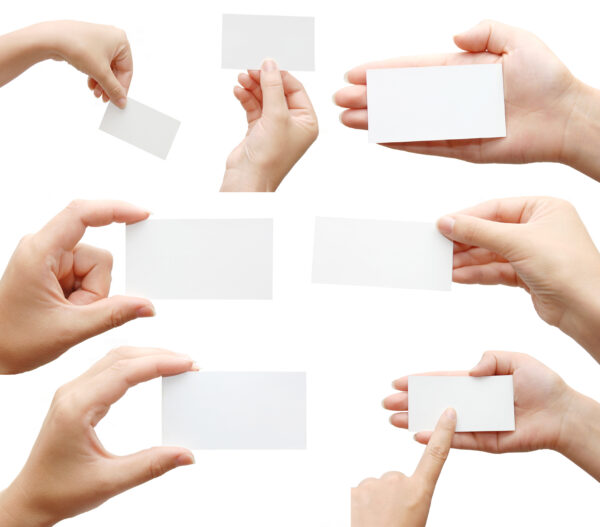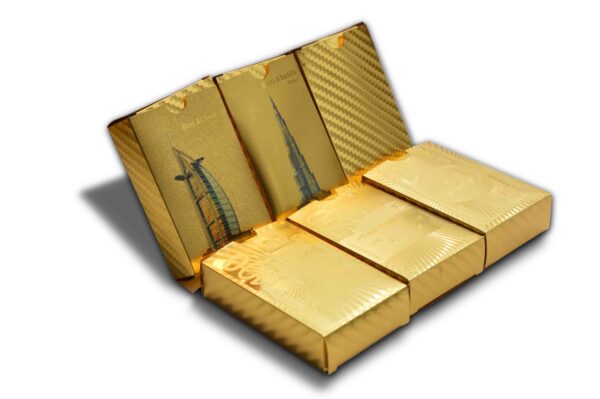Last updated on December 14, 2015
Selecting the right paper for your business card can be a challenge. Do you choose glossy, matte, or color? The choices can be bewildering. The paper you choose is the critical first-step toward creating a stellar business card.
You may find paper offered in grams (gsm) or pounds (lbs.), depending on the vendor. In order to compare, you might find some handy tools online, such as a paper weight converter, or comparison chart. Generally speaking, the cheapest paper may not be appropriate for business cards. Many companies offering free, or budget, business cards will offer a lower grade card stock. A high quality card may be in the 400 gsm/227 lb. range.
The paper you choose will depend on a number of factors, including our card’s design, graphics, impression and budget. As you begin, ask yourself a few questions:
Is your card graphics-heavy?
A card with graphics will require a paper strong enough to handle the ink. In addition, your paper choice must be up to being handled multiple times without breaking down. For graphics-heavy cards, you’ll want to choose a paper in the heavier range.
Basic Design
If your card design calls for basic text and logo, you might be able to choose a lighter weight paper. However, you will want to not go less than an 80 lb. /150 gsm range.
Single or double sided
If your card is designed for double-sided, you’ll want at least 140 lb. / 225 gsm. The paper will need to be thick enough to take the ink with no bleed-through. For single sided, you may select a lighter weight paper.
What is your business?
The paper you choose can represent your business. For instance, if you are a clothing designer, a linen card might showcase reflect your business beautifully. With a little ingenuity, you can select a paper that acts as a perfect canvas to represent your business.
What is the life-span of the card?
Your card represents you. Once you hand out a business card, it’s extremely likely that your prospect will handle your card several times, perhaps put in a wallet, or pocket. Most likely, your card will be handled many times. It’s important to take the lifespan in to account when selecting your card. For instance, if your card is made of lighter weight paper, it may not survive the handling, and you could lose access to your prospect.
Matte
Many business cards are printed on matte paper stock. Matte offers a smooth, non-shiny finish. Matte papers come in a wide array of colors. If you decide on a matte finished card, carefully consider the color choices. Often, the more neutral tones, such as white, beige, tan, or cream may have crisper lettering than darker colored paper. Another benefit of a matte finish is to allow your prospect to jot notes on your business card.
Glossy
Glossy card stock has an aqueous coating that creates a shiny finish. The coating makes the paper perfect for double-sided printing and graphics. Another benefit of glossy stock is the longevity. The glossy coating resists tearing and smudging.
Photo Stock
When your card requires a photo quality finish, photo stock is the perfect choice. Actors, real-estate agents, and models often choose the photo stock. Photo stock works well for single-sided and double-sided printing, as well as full color cards.
Texture
Texture stock comes in both matte and glossy finish. Textured paper offers patterns, such as basket weave, linen, or hounds tooth. They come in a wide range of colors. Consider textured paper if you want to convey a quirky or artisanal message to your prospects.
Keeping it Local
Choose a local printer for your business cards. From Huntersville to Houston, there are many fine local print shops that can offer personalized service. If you choose a local print shop you can work with the designers and do test runs to perfect the card. Plus you can touch, feel, and smell your paper to get a feel for how your card will look to your customers.
The paper you choose for your business card can make-or-break your prospect’s impression of your company. Don’t be afraid to experiment with unexpected papers to capture, and keep, the attention of your prospects.
















Be First to Comment